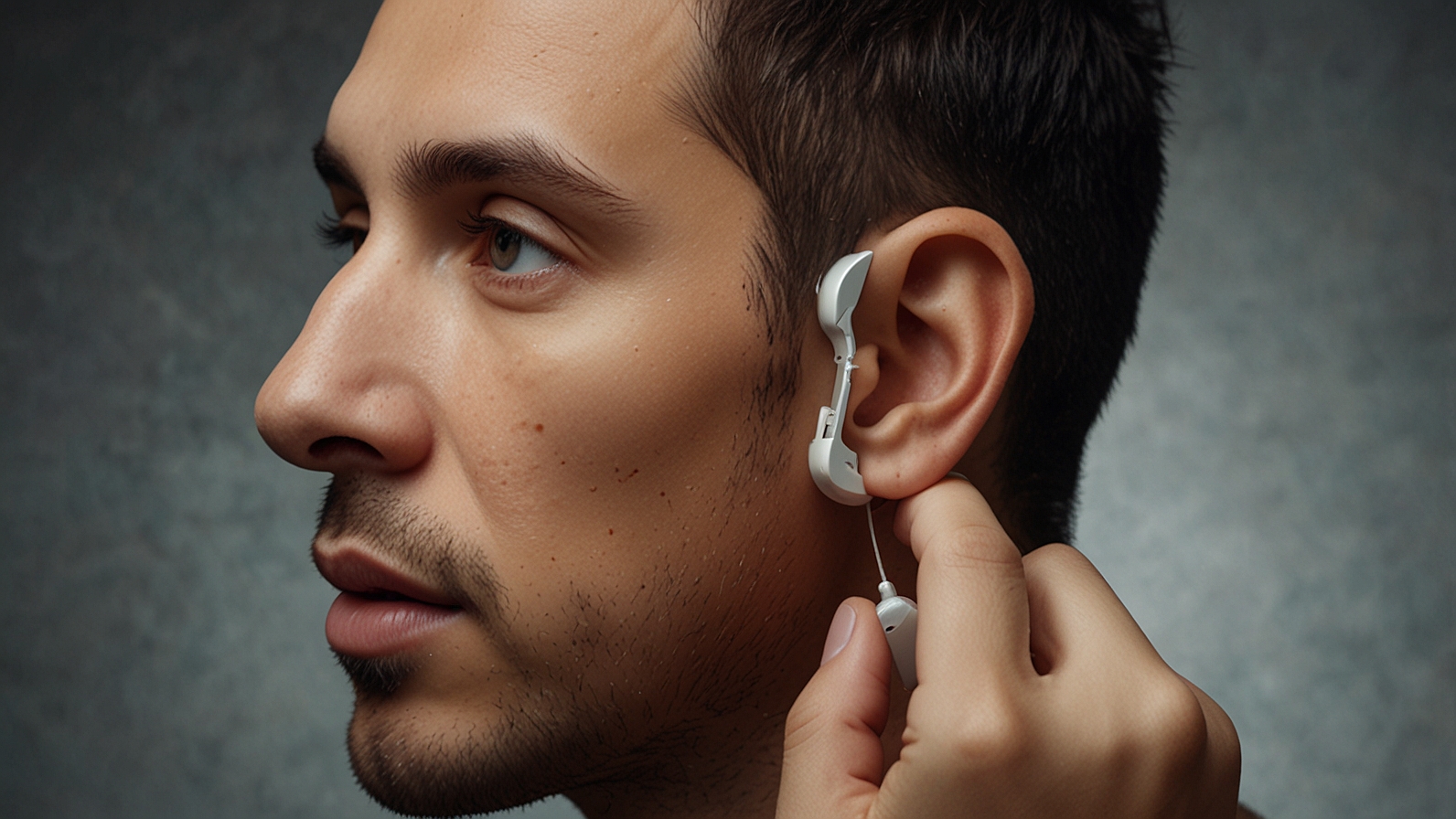For people who wear hearing aids, achieving the best sound quality and comfort is not just about choosing the right device it’s about how well that device is programmed to fit their unique hearing needs. That’s where Real Ear Measurement (REM) comes in.
Often considered the “gold standard” for hearing aid fitting, REM ensures that hearing aids are calibrated to match an individual’s exact hearing prescription in real-world listening environments. Unfortunately, many clinics skip this step, leaving patients with less-than-optimal results.
This guide will take you step by step through the Real Ear Measurement process, explain why it’s so important, and show what you can expect during an appointment.
What Is Real Ear Measurement?
Real Ear Measurement is an audiological test used to verify and adjust hearing aid performance. It involves placing a small microphone inside the ear canal to measure how much sound actually reaches the eardrum when a person is wearing their hearing aid.
Why is this necessary? Because everyone’s ear canal is shaped differently. The size, curves, and acoustics of the canal can change how sound is delivered, which means a “factory setting” or general fit won’t always work. REM personalizes the fit to ensure:
- Accuracy: The hearing aid delivers sound according to the person’s hearing loss prescription.
- Comfort: Sounds are neither too loud nor too soft.
- Clarity: Speech, music, and environmental sounds are clear and natural.
In short, REM fine-tunes hearing aids so they truly meet the wearer’s hearing needs.
Why Is REM Important?
Studies show that hearing aids programmed with Real Ear Measurement are more effective and lead to higher patient satisfaction compared to those without it. Key benefits include:
- Better speech understanding in noisy environments
- Reduced listening fatigue
- More natural sound quality
- Fewer follow-up adjustments
- Greater long-term hearing aid use
Without REM, a fitting is based on manufacturer “estimates” of how the device should perform in the ear—not the individual’s actual ear acoustics.
Step-by-Step Guide to the Real Ear Measurement Process
Now, let’s break down what actually happens during a Real Ear Measurement appointment.
Step 1: Initial Consultation and Hearing Aid Selection
Before REM begins, the audiologist will discuss the patient’s lifestyle, communication needs, and hearing challenges. This step helps determine the most suitable hearing aid model. Once selected, the device is programmed with an initial prescription based on the patient’s hearing test results.
Step 2: Inserting the Probe Microphone
The real magic of REM starts with a probe microphone. This is a very thin, flexible tube connected to a measuring system. The audiologist carefully places the probe into the patient’s ear canal, positioning it just a few millimeters away from the eardrum.
The hearing aid is then inserted into the ear alongside the probe. While it might sound uncomfortable, most patients only feel a slight tickle or pressure—it’s not painful.
Step 3: Playing Test Sounds
Once the probe is in place, the audiologist plays a series of calibrated test sounds or speech passages through a loudspeaker positioned in front of the patient. These sounds are designed to mimic real-world listening situations.
The probe microphone measures the actual sound levels reaching the eardrum with the hearing aid on.
Step 4: Comparing to the Hearing Prescription
The measurement results are displayed on the audiologist’s computer in real time. These results are then compared against the patient’s prescribed amplification targets, which are calculated based on their hearing test.
If the measured sound levels are too soft or too loud compared to the prescription, adjustments are made.
Step 5: Fine-Tuning the Hearing Aid
This is where REM really makes a difference. The audiologist adjusts the hearing aid’s programming changing frequency response, amplification levels, or compression settings until the real ear measurements align perfectly with the prescription.
For example:
- If high-pitched sounds aren’t loud enough, the gain in those frequencies can be increased.
- If low-frequency background noise is overwhelming, it can be reduced.
- If speech sounds aren’t clear, amplification is fine-tuned to highlight speech frequencies.
Step 6: Verification and Patient Feedback
After adjustments are made, another round of test sounds is played to confirm accuracy. Once the hearing aid is optimized, the audiologist may also ask the patient for subjective feedback:
- Does speech sound natural?
- Are everyday sounds comfortable?
- Is music enjoyable?
This combination of scientific measurement and patient experience ensures the best possible outcome.
What to Expect During a REM Appointment?
- Time: The process typically takes 30–60 minutes.
- Comfort: Insertion of the probe may feel unusual, but it isn’t painful.
- Accuracy: REM ensures that your hearing aids match your unique ear acoustics.
- Results: Most patients immediately notice clearer, more natural sound.
Myths About Real Ear Measurement
Despite being the gold standard, not all clinics provide REM. Some common myths include:
- “It’s not necessary.” → False. Without REM, fittings rely on guesswork.
- “It takes too long.” → False. The process is quick and saves time on follow-up visits.
- “All hearing aids are the same, so REM isn’t needed.” → False. Ear canals vary greatly, making personalization critical.
The Role of Experienced Providers
REM requires not only the right equipment but also expertise in interpretation and fine-tuning. A skilled audiologist ensures that adjustments are precise and tailored to the individual’s lifestyle.
They integrate Real Ear Measurement into every fitting process, guaranteeing that each hearing aid is calibrated for maximum clarity and comfort. By combining advanced technology with patient-centered care, they ensure long-term hearing success.
Why Patients Should Ask for REM
- When choosing a hearing care provider, patients should always ask:
- Do you use Real Ear Measurement in every fitting?
- How do you verify that my hearing aids meet my prescription?
- What adjustments can be made if I’m not satisfied with the sound?
A provider who prioritizes REM demonstrates a commitment to best practices and patient satisfaction.
Final Thoughts
Hearing aids are an investment in quality of life. To get the best return on that investment, proper fitting and verification are essential. Real Ear Measurement is the most accurate way to ensure that hearing aids deliver on their promise—clear, natural, and comfortable hearing.
By following this step-by-step process, audiologists can tailor devices to each patient’s unique hearing needs, setting the stage for better communication, stronger relationships, and a richer listening experience.
You May Also Read: Finding Affordable Human Hair Wigs Caucasian Made Easy










